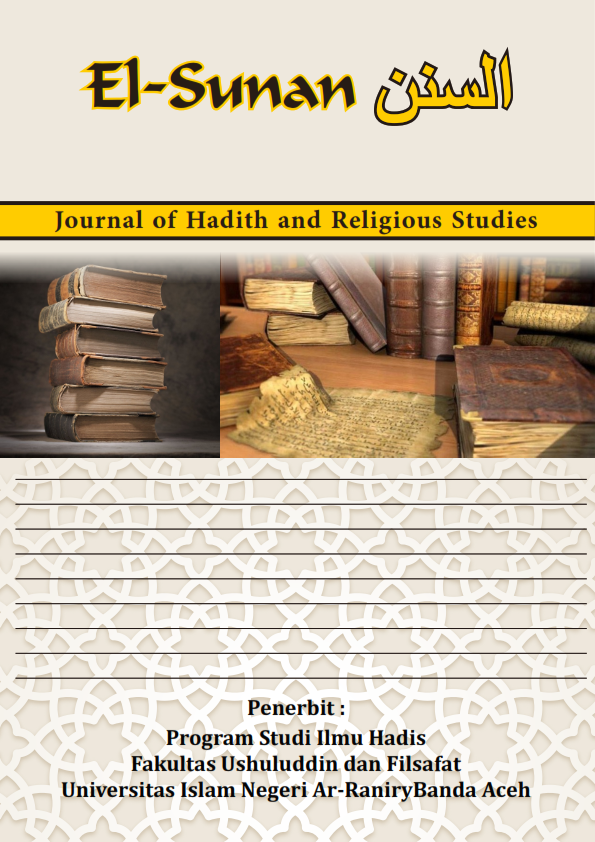The Dajjal in Islamic Prophetic Tradition: Between Literalism and Symbolic Interpretation
DOI:
https://doi.org/10.22373/el-sunan.v3i1.7660Keywords:
Dajjal, Islamic eschatology, ḥadīth interpretation, theological symbolismAbstract
The figure of the Dajjāl has long stood as a compelling yet contested subject within Islamic eschatology. While numerous ḥadīths describe his characteristics and role in the end times, scholars remain divided over whether the Dajjāl should be understood as a literal being or as a symbolic representation of deception and corruption. This study examines a selection of Prophetic traditions concerning the Dajjāl, focusing on their textual meaning and contextual interpretation within Islamic thought. Drawing upon the six canonical collections of ḥadīth (Kutub al-Sittah), the analysis explores both the literal attributes attributed to the Dajjāl—such as his one eye and false claims to divinity—and broader readings that link him to ideological, civilizational, or moral threats in history. The study finds that while classical scholars tended toward literal interpretations, modern Muslim thinkers often adopt a symbolic approach, framing the Dajjāl as a reflection of systemic injustice and spiritual misguidance. Ultimately, the article argues that the Dajjāl tradition, whether interpreted literally or metaphorically, serves as an enduring ethical warning about the dangers of falsehood, the fragility of faith, and the importance of moral discernment in times of trial.
References
Al-Bagdadi, Abdul Qadir Bin Thahir, Al-Farq Bainal Firaq (Dar al-Kutub Al-‘Ilmiyyah, 2000)
Al-Ghazali, Muhammad, Al-Sunnah Al-Nabawiyyah Baina Ahli Al -Fiqhi Wa Ahli Al-Hadis (Dar al-Syuruq, 2015)
Al-Qasimy, Jamaluddin, Qawa’id At-Tahdits Min Funun Musthalah Al-Hadits (Mathba’ah Ibnu Zaidan, 2002)
Armita, Pipin, and Jani Arni, ‘DINAMIKA PEMAHAMAN ULAMA TENTANG HADIS DAJJAL (Dari Interpretasi Tekstual Ke Interpretasi Kontekstual)’, Jurnal Ushuluddin, 25.2 (2017), p. 208, doi:10.24014/jush.v25i2.2398
CD Mausu‘ah al-Ḥadīth al-Sharīf, Shahih al-Bukhārī, Hadith nos. 5707, 6588, 3090, 1748
CD Mausu‘ah al-Ḥadīth al-Sharīf, Shahih Muslim, Hadith nos. 5215, 5205, 5227
CD Mausu‘ah al-Ḥadīth al-Sharīf, Sunan Ibn Mājah, Hadith nos. 4065, 4067
CD Mausu‘ah al-Ḥadīth al-Sharīf, Musnad Ahmad, Hadith nos. 12517, 23938
CD Mausu‘ah al-Ḥadīth al-Sharīf, Sunan Abī Dāwūd, Hadith nos. 3772, 4129
CD Mausu‘ah al-Ḥadīth al-Sharīf, Sunan al-Tirmidhī, Hadith nos. 2144, 2160
Cook, D, Studies in Muslim Apocalyptic, Studies in Late Antiquity and Early Islam (Darwin Press, 2002)
Fatkhullah, Faiz Karim, Tajudin Nur, and Undang Ahmad Darsa, ‘THE RECEPTION OF DAJAL STORY IN THE SAIFU AD-DHARIB’, Humanus, 17.1 (2018), p. 37, doi:10.24036/humanus.v17i1.8779
Haider, Qari Aziz, Hafiz Mohsin, Zia Qazi, and Muhammad Hameed, ‘An Analytical Study of Hadiths Hadiths on Dajjal (Antichrist) Interpreted by Peer Mehr Ali Shah Gilani: An Analytical Study’, Journal of World Researches (JWR, 2.1 (2022) <https://www.openacessjournal.com/article-file/202309061519381296853publ.pdf>
Halim, Abdul, Uqbatul Khoir Rambe, and Muhammad Sofian Hidayat, ‘Dajjal Dalam Perspektif Hadis (Analisi Hadis Tentang Dajjal Dalam Kitab Sunan Ibnu Majah)’, Ilmu Kewahyuan, 3.2 (2020), pp. 107–32 <http://repository.uinsa.ac.id/id/eprint/2311/>
Muhlisin, Muhammad, Story Of Dajjal Dan Ya’juj Ma’juj, (Araska, 2019)
Ozhukur, Ridan, ‘Hadiths about Dajjal: Exploring the Scholars’ Interpretations’, Islamonweb, 2024 <https://en.islamonweb.net/hadiths-about-dajjal-exploring-the-scholars-interpretations>
Saputro, Lilik Agus, Fitnah Dajjal Dan Ya’juj Ma’juj Mengungkap Misteri Kemunculan Dajjal Dan Ya’juj Ma’juj (Araska, 2019)
Thawilah, Abdul Wahab Abdus Salam, Al-Masih Al-Muntazhar Wa Nihayatu Al-‘Alam (Darussalam, 2002)
Downloads
Published
How to Cite
Issue
Section
License
Copyright (c) 2025 Muhammad Zaini

This work is licensed under a Creative Commons Attribution-NonCommercial-ShareAlike 4.0 International License.
- Authors retain copyright and grant the journal right of first publication with the work simultaneously licensed under an Attribution-NonCommercial-ShareAlike 4.0 International (CC BY-NC-SA 4.0) that allows others to share the work with an acknowledgment of the work's authorship and initial publication in this journal.
- Authors are able to enter into separate, additional contractual arrangements for the non-exclusive distribution of the journal's published version of the work (e.g., post it to an institutional repository or publish it in a book), with an acknowledgment of its initial publication in this journal.
- Authors are permitted and encouraged to post their work online (e.g., in institutional repositories or on their website) prior to and during the submission process, as it can lead to productive exchanges, as well as earlier and greater citation of published work.










